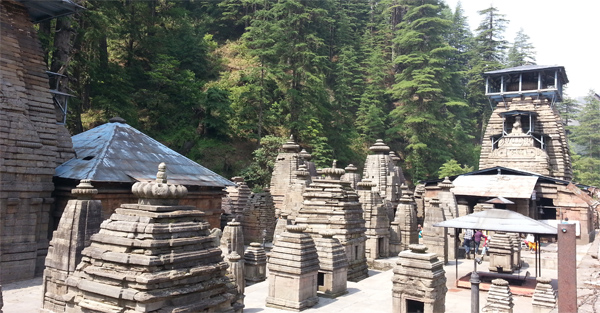Rewa Retreat, Uttarakhand

Uttarakhand
As the highest mountain range in the world, the grandeur, mystery and romance of the Himalayas cannot be surpassed. The Indian epic, Mahabharata, describes how the Pandavas journeyed through the Himalayas in the hope of reaching Heaven alive. “In a hundred ages of the gods, I could not tell you the wonders of the Himalaya,” notes an ancient Vedic text. Indeed, the Himalayas have held a special place in India’s spiritual consciousness since ancient times.
Bordered by Tibet in the North, Nepal in the East and the states of Himanchal Pradesh and Uttar Pradesh in the north and in the south respectively, the region is traditionally referred to as Uttarakhand in Hindu scriptures and old literature, a term which derives from the Sanskrit for Northern Country. Its peaks and valleys were well known in ancient times as the abode of gods and goddesses and source of the Ganga River.
Uttarakhand, long called “abode of the gods” (Devbhumi), is home to some of the holiest Hindu shrines, and for more than a thousand years, pilgrims have been visiting the region in the hopes of salvation and purification. Gangotri and Yamunotri, the sources of both the Ganga and Yamuna fall in the upper reaches of the state. These, together with Badrinath (dedicated to Vishnu) and Kedarnath (dedicated to Shiva) form the Chardham of Uttarakhand, one of Hinduisms most spiritually auspicious pilgrimage circuits. Rishikesh near Haridwar is known as the pre-eminent Yoga centre of India while Hemkund Saheb is of special significance to Sikhs. In addition, the state has an abundance of temples and shrines, many dedicated to local deities or manifestations of Shiva and Durga, references to many of which can be found in Hindu scriptures and legends. The architecture of most of these temples is typical of the region and slightly different from other parts of India. The ancient temples at Jageshwar are prominent for their distinct architectural features.
Discover Rewa Retreat, Bhowali
Bhowali, at an altitude of 1750 mtr, is a hamlet situated in the midst of the lake district of Nainital. It is the sole gateway into the Kumaon region of Uttarakhand on the Kathgodam, Ranikhet/ Almora Highway, and was better known as a health resort during the pre-independence era due to its salubrious climate and rejuvenating environs. Bhowali’s bustling local bazaar provides the locals with day-to-day essentials, while it’s fertile, terraced fields grow fruit, vegetables and flowers and supply us with the freshest of produce.
Bhowali has a temperate climate with four distinct seasons. In the summer months of April to June, wild flowers fill the meadows, and the air is cool, fresh and pine-scented. The rainy season from July to August has an appeal of its own with misty mountains, glorious sunsets and flourescence of greenery engulfing the hillsides. September to November is bright pleasant and bracing, while winter is crisp and invigorating with snow and bright, sunny weather.
The Bhowali suburb is dotted with orchards of fruit trees and turn-of-the-century houses with evocative names like Oak Lodge, Rose House and Apple House. It’s numerous shady glades, cool seasonal streams and flowery glens make it idyllic country for camping and picnics, as well as treks.
The natural vegetation comprises cedar or Himalayan deodar, pine, oak and rhododendron, as well as maple and horse chestnut, interspersed with variegated shrubs, wildflowers and grasses. The presence of orchards having trees bearing fruits such as apricots, plums, peaches; apples and persimmons peculiar to the Himalayas offer visitors a sensual experience.

The wildlife consists of jackals, kakkar (barking deer), and the occasional leopard, as well as numerous bird species such as the Himalayan eagle, pheasants, chikor and partridges. Take a walk through the jungle behind and you get to experience splendid views of the Western Himalayas. On a clear day, the mountains of the Panchachuli ranges can be seen stretching all the way to the horizon.
A handsome three-storey structure, Rewa Retreat has remained true to the spirit of the original bungalow in its external aspect. Borrowing from the traditional method of construction using locally available construction material with a dash of today’s modernity blends the past and present in perfect harmony. The exterior is clad in slate and red sandstone, while the upper floors are relieved by a tracery of balconies and railings. A pitched roof, typical of houses of the period, surmounts the building. Rebuilt to the most exacting standards, Rewa Retreat successfully blends the charm and beauty of the local architecture with modern-day comforts.







